Illinois’ MCT Goshen Trail
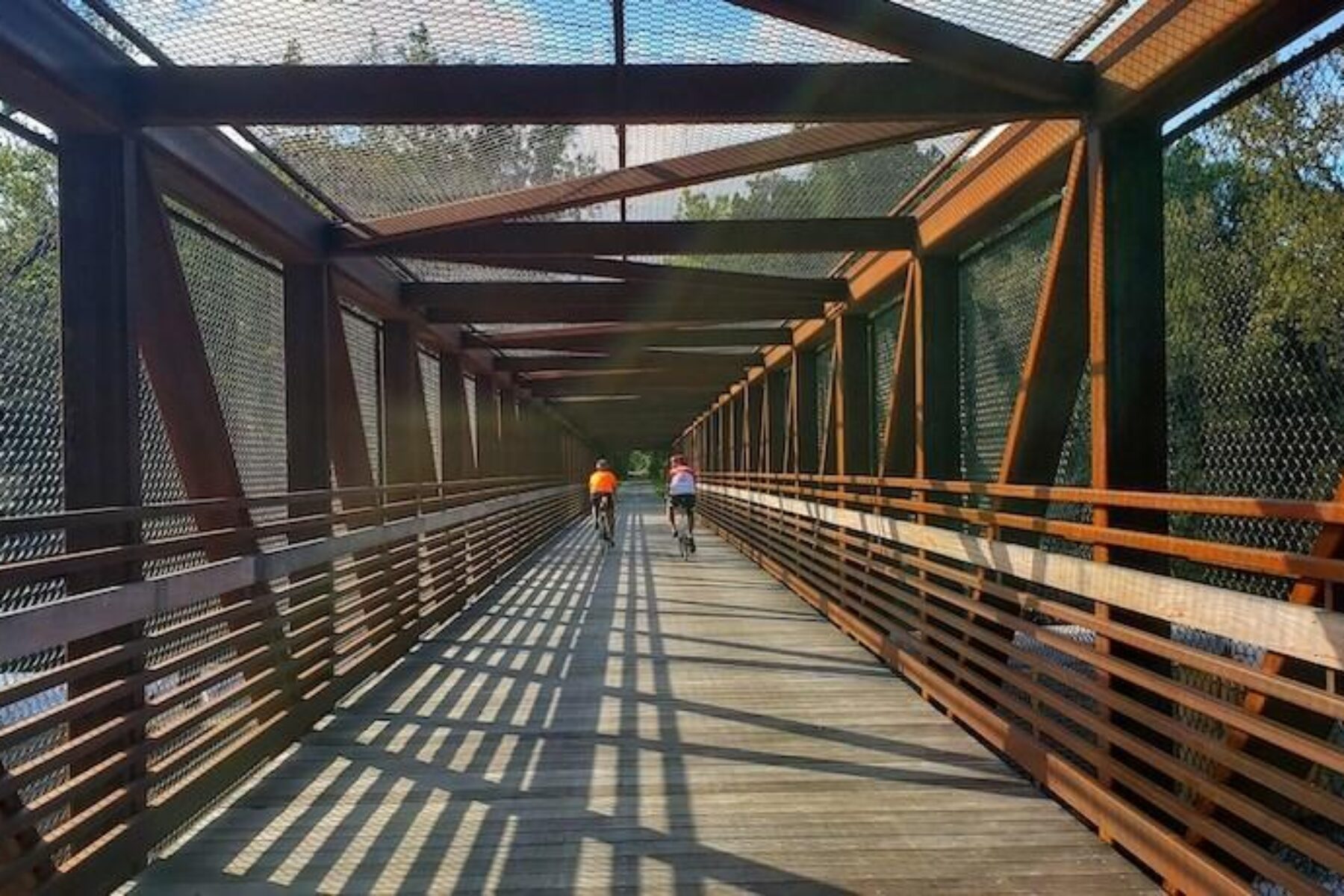
Trail of the Month: January 2020
“This is one of the ways in which we can tie our citizens together and create a future which is healthier and more vibrant.”
—Taulby Roach, president and CEO of Bi-State Development
Nestled in southwestern Illinois, across the Mississippi River from St. Louis, lies the MCT Trails system, an interconnected web of nine scenic multiuse trails that most people outside the area may never have heard of—but should. Uniquely run by a county transit agency, the trail system was developed with connections to the public bus system in mind and is seen as an integral part of the overall transportation network of the region.
Madison County Transit—the “MCT” part of the trail name—owns and manages nearly 140 miles of trails, which connect more than 20 communities and allow residents to get virtually anywhere within the county. With a newly opened extension of the MCT Goshen Trail, travelers can now also access neighboring St. Clair County by trail for the first time. Providing even more transit options for locals, many of St. Clair County’s trails are being developed to intertwine with MetroLink, the region’s light rail system.
“It’s really huge,” said Taulby Roach, president and CEO of Bi-State Development, about the new cross-county connection. “Although it’s two different counties, we are one community. This is one of the ways in which we can tie our citizens together and create a future which is healthier and more vibrant.”
A Transportation Corridor: Past and Present
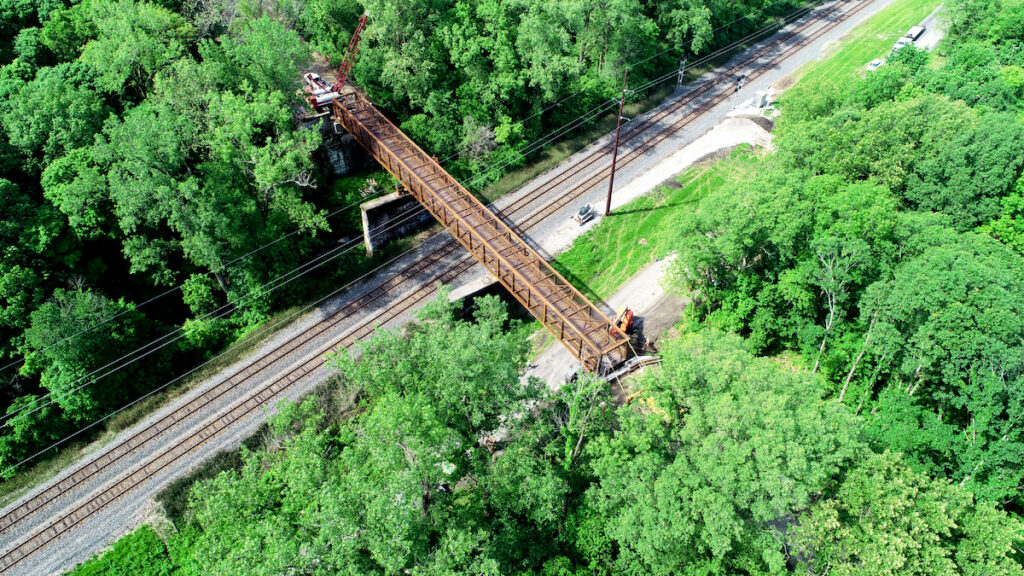
With its close proximity to the Mississippi, Madison County was once a hub of railroad activity. As the rail industry waned, those old corridors laid the groundwork for the extensive system of rail-trails that exists there today. The MCT Goshen Trail alone connects to five other trails in the network: the MCT Schoolhouse Trail, MCT Ronald J. Foster Heritage Trail, MCT Nickel Plate Trail, MCT Nature Trail and MCT Watershed Trail.
MCT began acquiring and converting these former railroad corridors in 1993. The timing was fortuitous, as a critical source of federal funding for rail-trails had recently become available via the Intermodal Surface Transportation Efficiency Act (referred to verbally as “ice tea” due to its acronym, ISTEA), which was signed into law in 1991.
The central figure in MCT’s trail efforts was Jerry Kane, who served as the organization’s managing director for more than three decades and retired just last month. He credits the 1983 Railbanking Act—which preserves rail corridors for interim trail use—as having been an essential tool for the development of the county’s trail system, and was grateful for the help of Charles Montange, Rails-to-Trails Conservancy’s first general counsel, in sharing his expertise with MCT to navigate that process.
Reflecting on the success of the MCT Trails over the years, Kane noted, “We really created a tourist attraction and improved the quality of life in the neighborhoods, and property values increased. In many areas where the trails are, if a house goes on sale in the morning, it’s sold by that afternoon because of the proximity it has to the trails.”
Though there was some opposition to building the trail system at first, Kane said that people’s attitudes have shifted over time. He recalled the time when he was scouting out the rail corridor for the MCT Nature Trail in the late 1990s, when an animated neighbor came out and shook his fist at him.
“They didn’t want a trail there,” said Kane. “They thought it was going to ruin their privacy and be the worst thing that ever happened. Then, fast forward a couple years to after the trail had been completed, and the very same person—when he saw me out behind his house again, this time standing on the trail—he came out and said, ‘I owe you an apology. This is the best thing that’s ever happened to our neighborhood. When I get home from work, I can walk right out my door and get on the trail. It’s very peaceful, like a linear park, and I want to thank you.’”
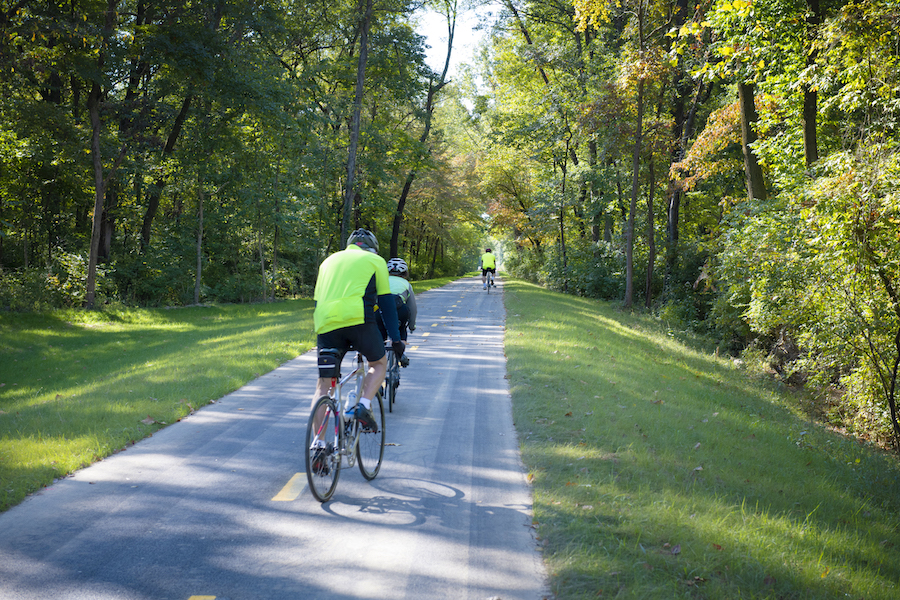
One of MCT’s latest projects was the completion of a 7-mile extension of the MCT Goshen Trail. Jon Greenstreet, a co-owner of Bike Surgeon, was thrilled when the trail was continued to O’Fallon, where his bike shop is located. With a new close connection to the MCT trail system, plans are underway to expand the shop’s services, including adding a venue for food and socializing, to complement the existing services of bike repairs and rentals, and weekly group rides for novice through advanced bicyclists.
“It’s definitely a local attraction,” said Greenstreet of the trail system. “There are tons of folks from St. Louis and the other side of the river coming over to ride because the MCT trails are awesome. We’re not attracting a huge number of folks from outside our metro area yet, but it’s growing.”
Echoing those sentiments was Bryan Werner, executive director of the Metro East Park and Recreation District, which helped fund the new trail extension. “For mid-November, it was a spectacular sunny day—a tad chilly, but it didn’t matter,” he said of the ribbon-cutting event. “There were about 150 people in attendance, and everybody was very excited. It was a long time in the making, and the day finally came!”
A Community Connector
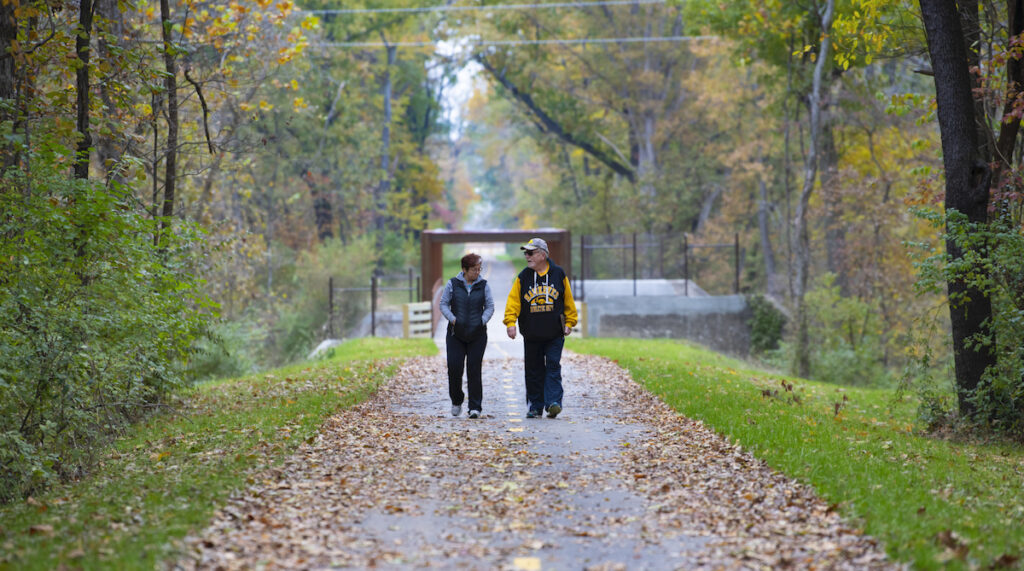
From O’Fallon on its southern end, the MCT Goshen Trail unfurls north 19.5 miles through Troy and the college town of Edwardsville and on to South Roxana. These charming communities offer lots of opportunities to grab a cup of coffee or lunch, and rest and refuel for more riding.
“When I was growing up, Edwardsville was a neat town, but didn’t have going on nearly what it has now,” said long-time area resident Greenstreet. “The trails coming in were something that really drove a lot of people to locate there, businesses to locate there and new things to come and happen there. The trail system has been very impactful, and it’s one of the things that has made Edwardsville the community that it is.”
Between the towns, the trail is often pleasantly tucked under tree canopy or threading through picturesque farmland, a quiet place where one might see deer or possums. The easy, paved riding experience is also enhanced by several underpasses and bridges that avoid busy street crossings. One of Greenstreet’s favorite spots is a new trail bridge spanning more than 200 feet across Lockmann Road and active railroad tracks about 5 miles north of his bike shop.
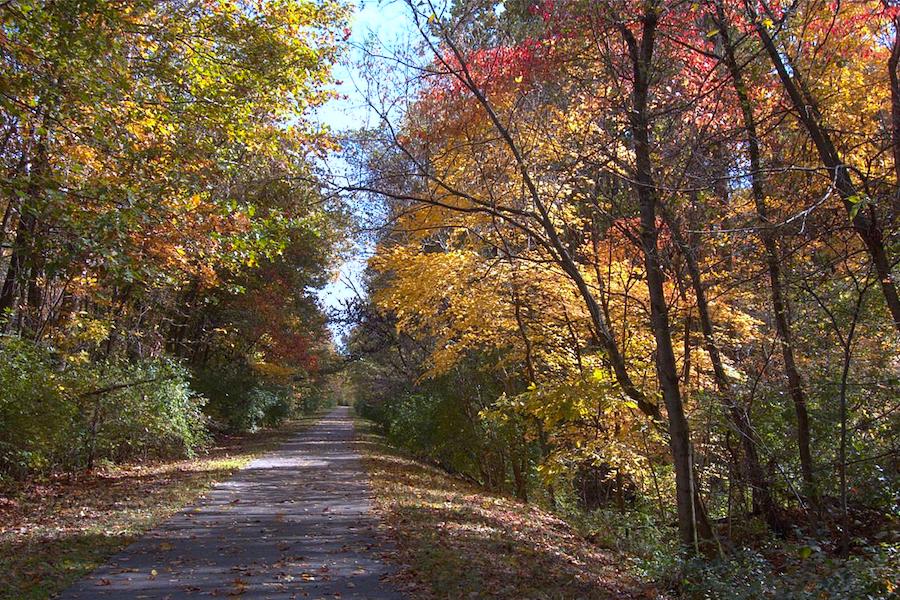
“You cross over an existing rail line, which is pretty cool,” he said. “You can sit there on that big bridge and watch the trains zip by at 60 mph hour below you. You feel the heat off the diesel if it’s really ripping as it goes by.”
With its scenic attributes and invaluable connectivity, the MCT Goshen Trail has proven to be a popular community asset, seeing more than 112,000 visitors a year. But it would not have been possible without a broad coalition of people working together to make it happen.
“The MCT Goshen Trail is a perfect example of intergovernmental cooperation at work and successful,” said Werner. “In this project, there was not only us, but two counties, two transit districts and municipalities along the trail all partnering toward a common purpose. And, as the trail system expands, there’s no doubt that there’s a snowball effect in that those communities that are not connected by trail want to be and those individuals not using the trails begin to do so.”

Donate
Everyone deserves access to safe ways to walk, bike, and be active outdoors.
